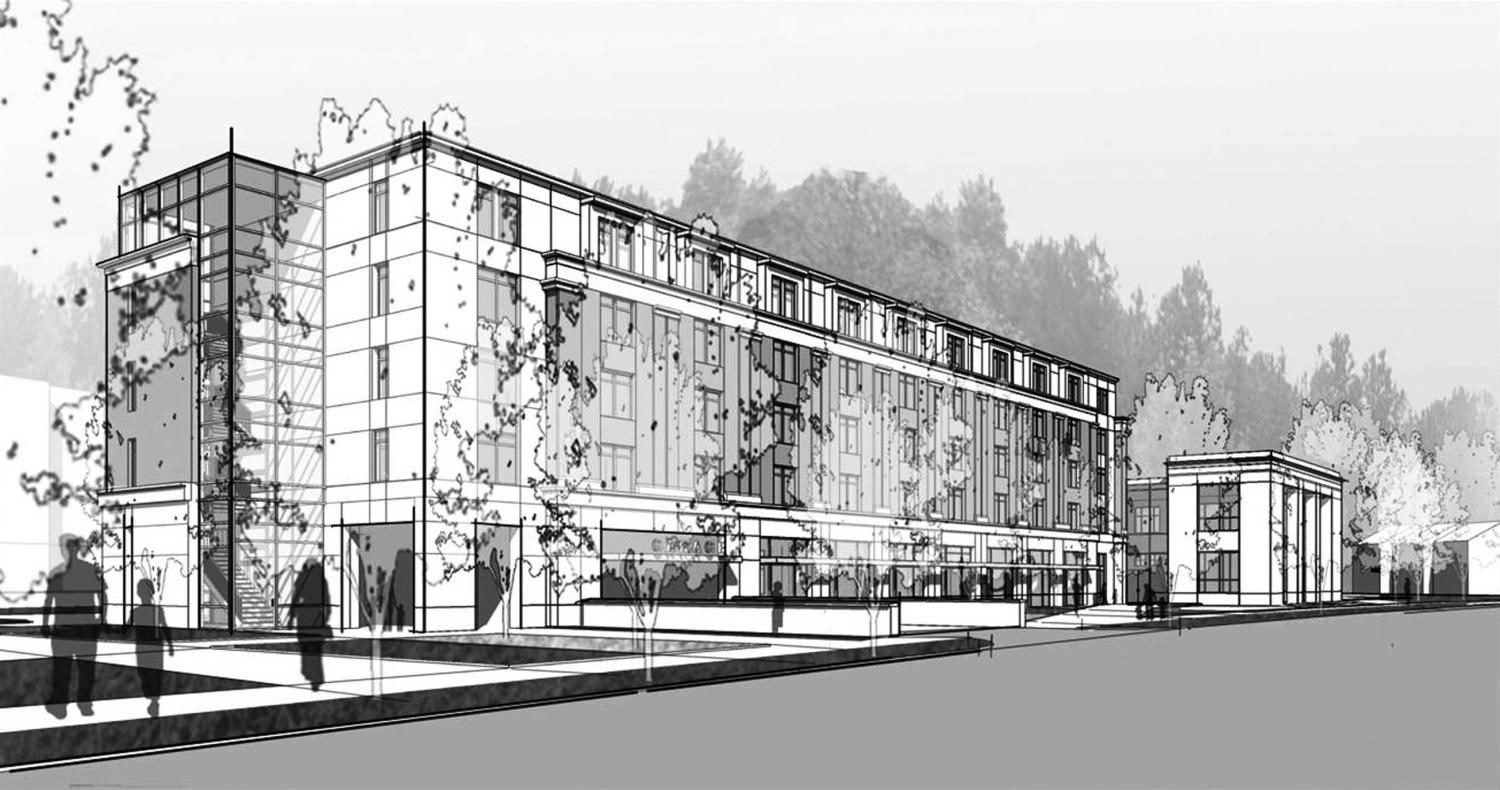Aesthetics and Academics: Architecture at AU
One reason AU’s campus stands out among the others is the fact that it is a designated arboretum and public garden. And according to AU Architect Jerry Gager, it is difficult to overestimate the importance of a university’s positive use of physical space: “The combination of innovative, well-designed buildings and equally prepared grounds adds to a student’s academic experience at the university and is beneficial to all community members.”
Considering the professed importance of utilizing physical space, it’s interesting to note the extent to which universities have been bound by convention. As centers of learning, universities ideally function as incubators of creative thought and youthful energy, and should naturally overflow with creative and avant garde expression. But this all takes place in a setting that, often, neither encourages nor reflects this creativity. Besides now offering a broader range of subjects to more diverse student bodies, universities have not changed much in decades — least of all architecturally.
Universities are driven in part by profit, and ancient knowledge and everlasting prestige sell well. Beige color palettes and stoic classical architecture imply a businesslike seriousness, which may be appropriate for training the next generation of policy makers, businesspeople and analysts.
AU’s design has its roots in the 1893 Chicago World Fair’s Columbian Exposition, whose “White City” inspired the university’s classical architecture style. As the university grew in the century following its founding, new facilities reflected changing trends. Hamilton Hall is a Gothic stone construction from the 1930s; the former SIS building, now the East Quad Building, is in the 1950s International style; Bender Library is a 1970s product of the Brutalist movement in modern architecture.
AU is continuing to grow. According to Gager, the integration of more open public space into buildings — seen in the wide open atriums of the new SIS building and the Katzen Arts Center — and the introduction of environmentally conscious designs are the latest trends in campus construction.
But should we not demand actual creativity from the university, rather than adherence to trends? Judging by the “make-or-break” mentality of campus tours, looks do matter. There is a thriving world of experimental design out there, and universities, with their massive endowments and guaranteed tenants, are in the perfect position to take advantage of it. Universities can afford to test new styles that promote a creative, productive atmosphere, and could even act as spring boards for innovation into the mainstream market.
AU has been active in pursuing high-quality campus improvements; the new SIS building features LED lighting in the garage, natural lighting throughout the building, photovoltaic panels to make electricity from sunlight, a solar ventilation preheating system which cuts down on heating costs, and a rain garden to return storm water to the ground. The office of the University Architect reports that the building is in the running for several awards for its innovative energy-saving design — and Katzen has already been the recipient of several design awards.
Energy-saving architecture is crucial, and AU should be lauded for implementing more sustainable design, but the design envelope can always be pushed further. As the university prepares to expand with a new East Campus across Nebraska Avenue, it should consider embracing new ideas and styles that are not only popular and sustainable, but aesthetically impressive, innovative and effective. When we look around campus now, we see bland vestiges of long-gone architectural movements. In 50 years, when we look at the coming East Campus buildings, will we see mere remnants of a past “green” fad? Or will we see buildings that remain as striking, practical and beautiful as they have always been?
Illustration courtesy of AU.







